Study on Mine Earthquakes Mechanism and Ground Vertical Well Hydraulic Fracturing Shock Absorption in Thick Hard Rock Mine
Abstract
:1. Introduction
2. Overview of the Sixth Mining Area of Dongtan Coal Mine and Its Mine Earthquakes Occurrence
2.1. Stratum Structure of the Sixth Mining Area in Dongtan Coal Mine
2.2. Mining Situation in the Working Face of the Sixth Mining Area
2.3. Occurrence Law of Mine Earthquakes in Sixth Mining Area of Dongtan Coal Mine
3. Study on Fracture-Type Mine Earthquake Mechanism of Super-Thick Hard Rock
3.1. Mechanics Analysis of Fracture-Type Mine Earthquakes in Super-Thick Hard Rock
3.1.1. Initial Fracture Mechanics Analysis of Super-Thick Hard Rock
3.1.2. Mechanics Analysis on the Periodic Fracture in the Super-Thick Hard Strata
3.2. Energy Analysis on the Fracture-Type Mine Earthquake in Super Thick Hard Strata
3.3. Results and Discussion from a Case Study
4. Study on Mechanism of Ground Vertical Well Hydraulic Fracturing to Prevent and Control Fracture-Type Mine Earthquakes in Thick Hard Rock
4.1. The Crack Propagation Law of Hydraulic Fracturing by Ground Vertical Well
4.2. Mechanical Analysis of Super-Thick Hard Rock Strata after Hydraulic Fracturing of Surface Vertical Wells
4.2.1. The Spacing of Surface Hydraulic Fracturing Wells Is Greater Than the Periodic Fracture Step of Extremely Thick Hard Rock Strata
4.2.2. The Spacing of Surface Hydraulic Fracturing Wells Is Less Than the Periodic Fracture Step of Extremely Thick Hard Rock Strata
5. Research on Shock Absorption Technology of Ground Vertical Well Hydraulic Fracturing Thick Hard Rock
5.1. Design of Fracturing Well Spacing Based on Controlling Maximum Magnitude
5.1.1. The Ground Hydraulic Fracturing Well Spacing Is Greater Than the Thick Hard Rock Periodic Fracture Step
5.1.2. The Ground Hydraulic Fracturing Well Spacing Is Less Than the Thick Hard Rock Periodic Fracture Step
5.2. Damping Effect Verification of Ground Vertical Well Hydraulic Fracturing
6. Conclusions
Author Contributions
Funding
Institutional Review Board Statement
Informed Consent Statement
Data Availability Statement
Acknowledgments
Conflicts of Interest
References
- Wei, C.; Zhang, C.; Canbulat, I.; Cao, A.; Dou, L. Evaluation of current coal burst control techniques and development of a coal burst management framework. Tunn. Undergr. Space Technol. 2018, 81, 129–143. [Google Scholar] [CrossRef]
- Wasilewski, S. Gas-dynamic phenomena caused by rock mass tremors and rock bursts. Int. J. Min. Sci. Technol. 2020, 30, 413–420. [Google Scholar] [CrossRef]
- Wang, J.; Ning, J.; Qiu, P.; Shang, Y.; Shang, H. Microseismic monitoring and its precursory parameter of hard roof collapse in longwall faces: A case study. Geomech. Eng. 2019, 17, 375–383. [Google Scholar] [CrossRef]
- Zhang, M.; Jiang, F. Rock burst criteria and control based on an abutment-stress-transfer model in deep coal roadways. Energy Sci. Eng. 2020, 8, 2966–2975. [Google Scholar] [CrossRef]
- Dou, L.; Cao, J.; Cao, A.; Chai, Y.; Bai, J.; Kan, J. Research on types of coal mine tremor and propagation law of shock waves. Coal Sci. Technol. 2021, 49, 23–31. [Google Scholar] [CrossRef]
- Jiang, L.; Wu, Q.; Wu, Q.; Wang, P.; Xue, Y.; Kong, P.; Gong, B. Fracture failure analysis of hard and thick key layer and its dynamic response characteristics. Eng. Fail. Anal. 2019, 98, 118–130. [Google Scholar] [CrossRef]
- Ning, J.; Wang, J.; Jiang, L.; Jiang, N.; Liu, X.; Jiang, J. Fracture analysis of double-layer hard and thick roof and the controlling effect on strata behavior: A case study. Eng. Fail. Anal. 2017, 81, 117–134. [Google Scholar] [CrossRef]
- Yang, Z.; Liu, C.; Tang, S.; Dou, L.; Cao, J. Rock burst mechanism analysis in an advanced segment of gob-side entry under different dip angles of the seam and prevention technology. Int. J. Min. Sci. Technol. 2018, 28, 891–899. [Google Scholar] [CrossRef]
- Li, D.; Zhang, J. Rockburst Monitoring in Deep Coalmines with Protective Coal Panels Using Integrated Microseismic and Computed Tomography Methods. Shock. Vib. 2020, 2020, 8831351. [Google Scholar] [CrossRef]
- Urbancic, T.I.; Trifu, C.I. Recent advances in seismic monitoring technology at Canadian mines. J. Appl. Geophys. 2000, 45, 225–237. [Google Scholar] [CrossRef]
- Driad-Lebeau, L.; Lahaie, F.; Al Heib, M.; Josien, J.P.; Bigarré, P.; Noirel, J.F. Seismic and geotechnical investigations following a rockburst in a complex French mining district. Int. J. Coal Geol. 2005, 64, 66–78. [Google Scholar] [CrossRef]
- Zhu, S.; Feng, Y.; Jiang, F. Determination of Abutment Pressure in Coal Mines with Extremely Thick Alluvium Stratum: A Typical Kind of Rockburst Mines in China. Rock Mech. Rock Eng. 2015, 49, 1943–1952. [Google Scholar] [CrossRef]
- Zhang, M.; Zhang, J.; Jiang, F.; Jiao, Z. Design of rib pillars in deep longwall mines based on rockburst and water-seepage prevention. Energy Sci. Eng. 2020, 9, 256–266. [Google Scholar] [CrossRef]
- Wu, J.; Meng, X.R.; Jiang, Y.D. Development of longwall top-coal caving technology in China. In Proceedings of the International Workshop on Underground Thick-Seam Mining, Beijing, China, 15 April 1999; Volume 6, pp. 101–112. [Google Scholar]
- Yu, B.; Zhang, L. Study on the abutment pressure distribution in top coal caving. Arab. J. Geosci. 2020, 13, 162. [Google Scholar] [CrossRef]
- Pengfei, L.; Xinyang, B.; Gang, L.; Xuehua, C.; Gong, F. Research on Fault Activation Law in Deep Mining Face and Mechanism of Rockburst Induced by Fault Activation. Adv. Civ. Eng. 2020, 2020, 8854467. [Google Scholar] [CrossRef]
- Rong, H.; Yu, S.; Zhang, H.; Liang, B. Quantitative Calculation of Critical Depth in Typical Rockburst Mine. Adv. Civ. Eng. 2020, 2020, 7968160. [Google Scholar] [CrossRef]
- Dong, G.; Liang, X.; Wang, Z. The Properties of a Coal Body and Prediction of Compound Coal-Rock Dynamic Disasters. Shock. Vib. 2020, 2020, 8830371. [Google Scholar] [CrossRef]
- Guo, J.; Ma, L.; Ju, F.; Zhang, C.; Wang, F.; Guo, S. Mechanism of Dynamic Failure in Roadways with Thick and Competent Roof Strata: A Case Study. Adv. Civ. Eng. 2019, 2019, 2618543. [Google Scholar] [CrossRef]
- He, S.; Song, D.; Li, Z.; He, X.; Chen, J.; Zhong, T.; Lou, Q. Mechanism and Prevention of Rockburst in Steeply Inclined and Extremely Thick Coal Seams for Fully Mechanized Top-Coal Caving Mining and Under Gob Filling Conditions. Energies 2020, 13, 1362. [Google Scholar] [CrossRef]
- Lyu, P.; Chen, X.; Chen, G.; Qiu, L. Experimental study on dynamic mechanical responses of coal specimens under the combined dynamic-static loading. Arab. J. Geosci. 2020, 13, 935. [Google Scholar] [CrossRef]
- Zhou, H.; Meng, F.; Zhang, C.; Hu, D.; Yang, F.; Lu, J. Analysis of rockburst mechanisms induced by structural planes in deep tunnels. Bull. Eng. Geol. Environ. 2014, 74, 1435–1451. [Google Scholar] [CrossRef]
- Sainoki, A.; Mitri, H.S. Simulating intense shock pulses due to asperities during fault-slip. J. Appl. Geophys. 2014, 103, 71–81. [Google Scholar] [CrossRef]
- Jiang, L.; Wang, P.; Zheng, P.; Luan, H.; Zhang, C. Influence of Different Advancing Directions on Mining Effect Caused by a Fault. Adv. Civ. Eng. 2019, 2019, 7306850. [Google Scholar] [CrossRef]
- Yang, Z.; Liu, C.; Zhu, H.; Xie, F.; Dou, L.; Chen, J. Mechanism of rock burst caused by fracture of key strata during irregular working face mining and its prevention methods. Int. J. Min. Sci. Technol. 2019, 29, 889–897. [Google Scholar] [CrossRef]
- Cai, W.; Dou, L.; Li, Z.; He, J.; He, H.; Ding, Y. Mechanical Initiation and Propagation Mechanism of a Thrust Fault: A Case Study of the Yima Section of the Xiashi-Yima Thrust (North Side of the Eastern Qinling Orogen, China). Rock Mech. Rock Eng. 2014, 48, 1927–1945. [Google Scholar] [CrossRef]
- Prusek, S.; Masny, W. Analysis of damage to underground workings and their supports caused by dynamic phenomena. J. Min. Sci. 2015, 51, 63–72. [Google Scholar] [CrossRef]
- Carpinteri, A.; Borla, O. Acoustic, electromagnetic, and neutron emissions as seismic precursors: The lunar periodicity of low-magnitude seismic swarms. Eng. Fract. Mech. 2019, 210, 29–41. [Google Scholar] [CrossRef]
- Brace, W.F.; Byerlee, J.D. Stick-slip as a mechanism forearthquakes. Science 1966, 153, 990–992. [Google Scholar] [CrossRef]
- Cong, Z.; Li, Y.; Tang, J.; Martyushev, D.A.; Hu, B.; Yang, F. Numerical simulation of hydraulic fracture height layer-through propagation based on three-dimensional lattice method. Eng. Fract. Mech. 2022, 264, 108331. [Google Scholar] [CrossRef]
- Martyushev, D.A.; Galkin, S.V.; Shelepov, V.V. The influence of the rock stress state on matrix and fracture permeability under conditions of various lithofacial zones of the tournaisian-fammenian oil fields in the Upper Kama Region. Mosc. Univ. Geol. Bull. 2019, 74, 573–581. [Google Scholar] [CrossRef]
- Ponomareva, I.N.; Martyushev, D.A. Evaluation of hydraulic fracturing results based on the analysis of geological field data. Georesursy 2020, 22, 8–14. [Google Scholar] [CrossRef]
- Martyushev, D.A. Rock stress state influence on permeability of carbonate reservoirs. Bull. Tomsk. Polytech. Univ. Geo Assets Eng. 2020, 331, 24–33. [Google Scholar]
- Zhu, Q.; Feng, Y.; Cai, M.; Liu, J.; Wang, H. Interpretation of the extent of hydraulic fracturing for rockburst prevention using microseismic monitoring data. J. Nat. Gas Sci. Eng. 2017, 38, 107–119. [Google Scholar] [CrossRef]
- Kang, H.; Zhang, X.; Si, L.; Wu, Y.; Gao, F. In-situ stress measurements and stress distribution characteristics in underground coal mines in China. Eng. Geol. 2010, 116, 333–345. [Google Scholar] [CrossRef]
- Ma, D.; Duan, H.; Zhang, Q.; Zhang, J.; Li, W.; Zhou, Z.; Liu, W. A Numerical Gas Fracturing Model of Coupled Thermal, Flowing and Mechanical Effects. Comput. Mater. Contin. 2020, 65, 2123–2141. [Google Scholar] [CrossRef]
- Figueiredo, B.; Tsang, C.-F.; Rutqvist, J.; Niemi, A. Study of hydraulic fracturing processes in shale formations with complex geological settings. J. Pet. Sci. Eng. 2017, 152, 361–374. [Google Scholar] [CrossRef]
- Ge, Z.; Mei, X.; Lu, Y.; Tang, J.; Xia, B. Optimization and application of sealing material and sealing length for hydraulic fracturing borehole in underground coal mines. Arab. J. Geosci. 2014, 8, 3477–3490. [Google Scholar] [CrossRef]
- Lu, Y.; Cheng, L.; Ge, Z.; Xia, B.; Li, Q.; Chen, J. Analysis on the Initial Cracking Parameters of Cross-Measure Hydraulic Fracture in Underground Coal Mines. Energies 2015, 8, 6977–6994. [Google Scholar] [CrossRef]
- Cong, L.; Jianqiang, D.; Yaoru, L.; Qiang, Y.; Hongfei, D. Experiment simulation of hydraulic fracture in colliery hard roof control. J. Pet. Sci. Eng. 2016, 138, 265–271. [Google Scholar] [CrossRef]
- Xu, J.; Zhai, C.; Qin, L. Mechanism and application of pulse hydraulic fracturing in improving drainage of coalbed methane. J. Nat. Gas Sci. Eng. 2017, 40, 79–90. [Google Scholar] [CrossRef]
- Xu, Z. A Concise Course of Elastic Mechanics; Higher Education Press: Beijing, China, 2001; pp. 46–51. [Google Scholar]
- Zhang, M.; Jiang, F.; Chen, G.; Jiao, Z.; Hu, H.; Chen, B. Stope stress transfer model based on the motion state of thick and hard rock strata and its application. J. Rock Mech. Eng. 2020, 39, 1396–1407. [Google Scholar] [CrossRef]
- Zhang, M.; Jiang, F.; Li, K.; Sun, C.; Zhai, M. Research on ground motion damage boundary based on breaking of thick and hard key strata. J. China Univ. Min. Technol. 2017, 46, 514–520+536. [Google Scholar] [CrossRef]
- Jin, H.; Yan, X.; Ren, L.; Cao, C. A preliminary study on the empirical relationship between near-earthquake magnitude and surface wave magnitude in Xinjiang. Inland Earthq. 2021, 35, 150–156. [Google Scholar]
- Shang, X.; Zhu, S.; Jiang, F.; Zhang, X.; Wang, C.; Wang, C.; Xie, H.; Yan, X.; Liu, J.; Wei, Q. Experimental study on prevention and control of super thick hard rock movement-type mine earthquake by ground vertical well hydraulic fracturing. Coal J. 2021, 46, 639–650. [Google Scholar] [CrossRef]





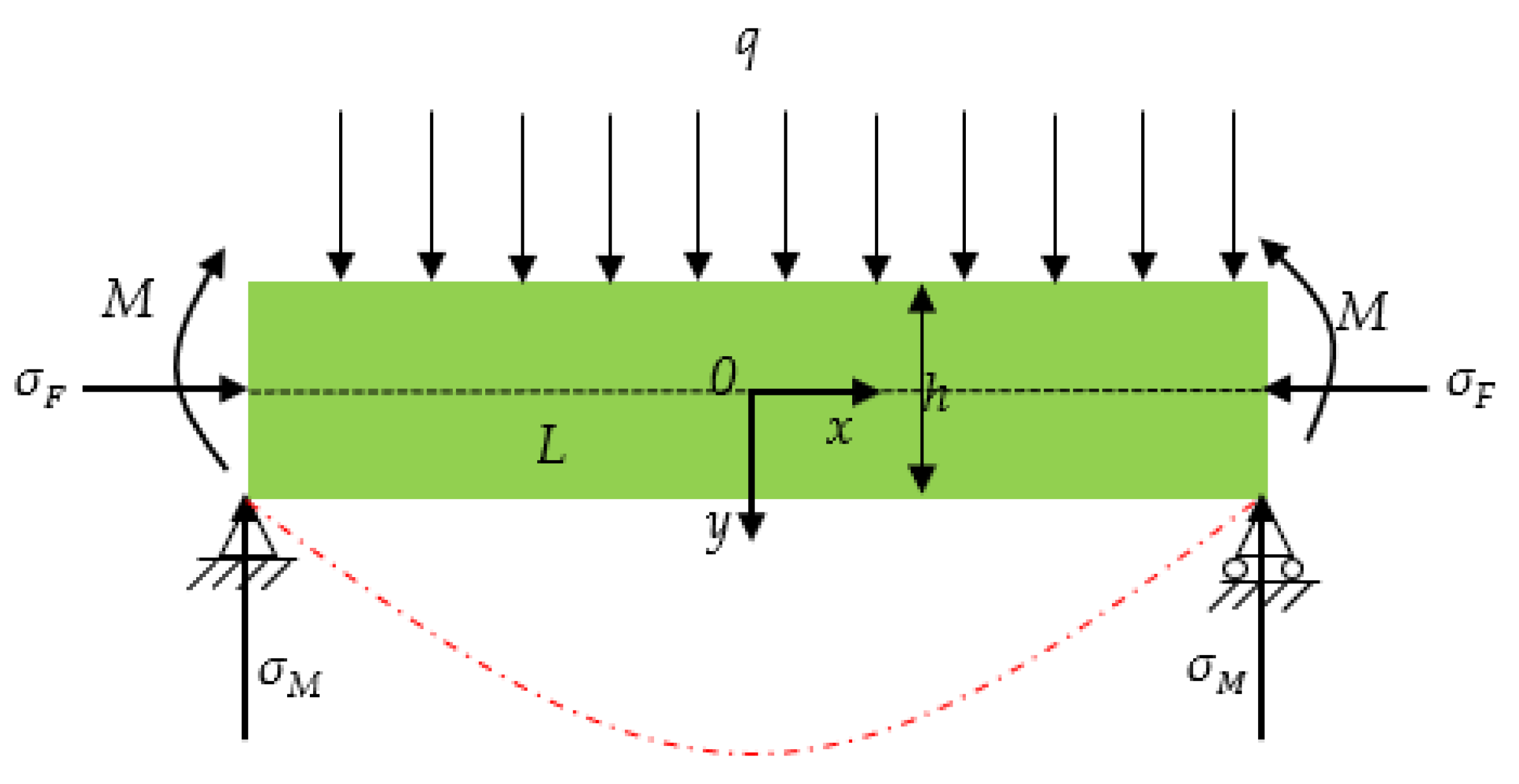
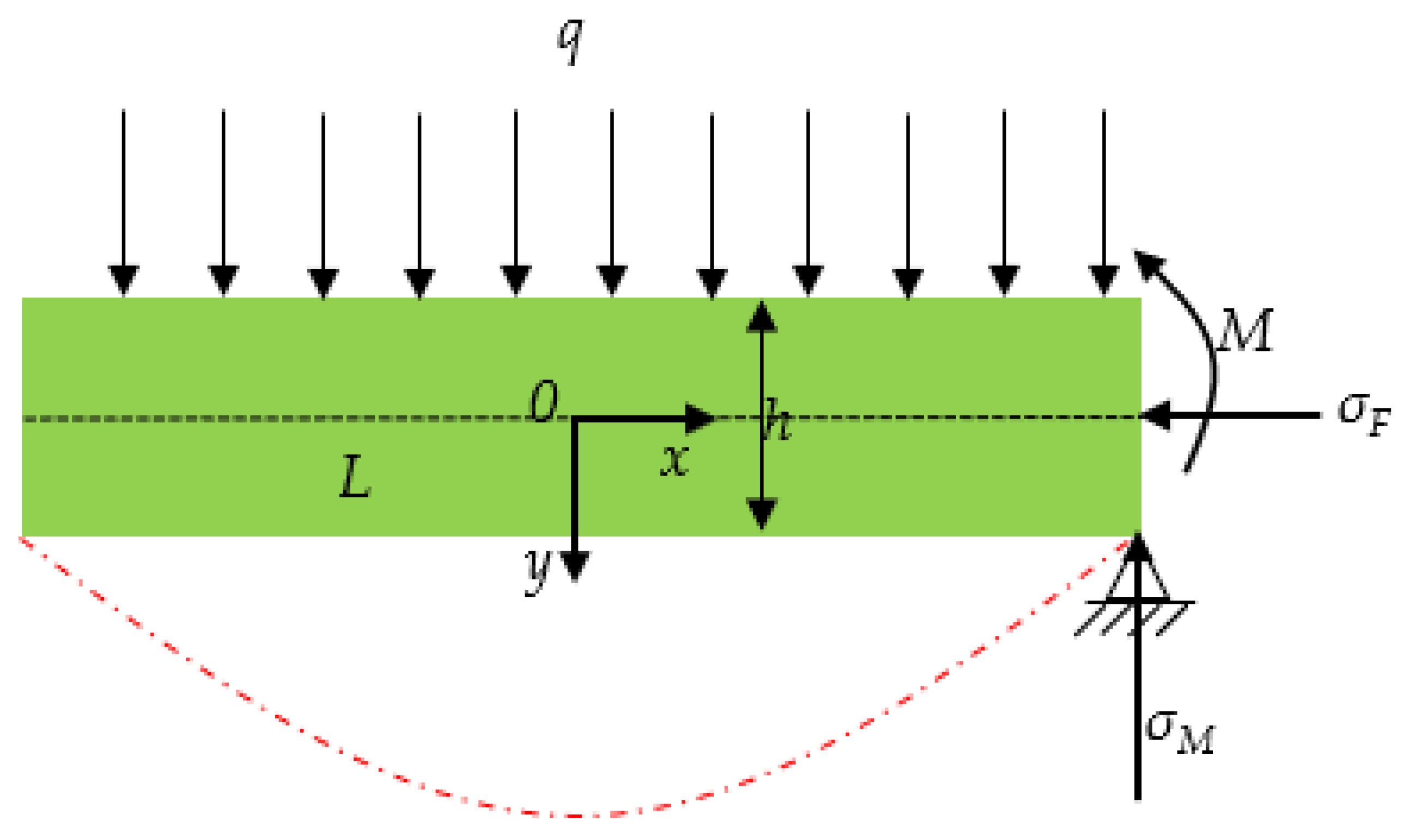
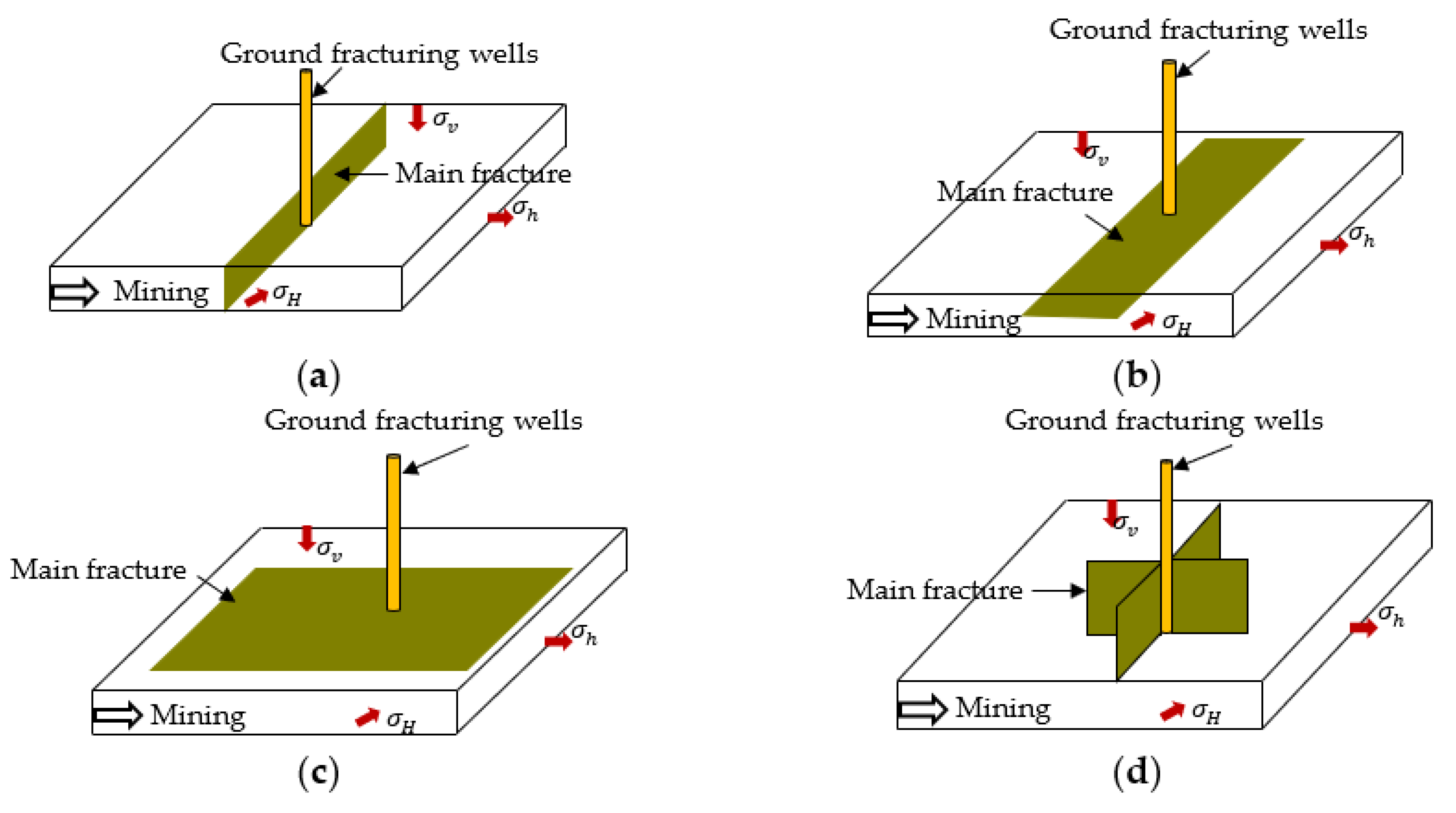
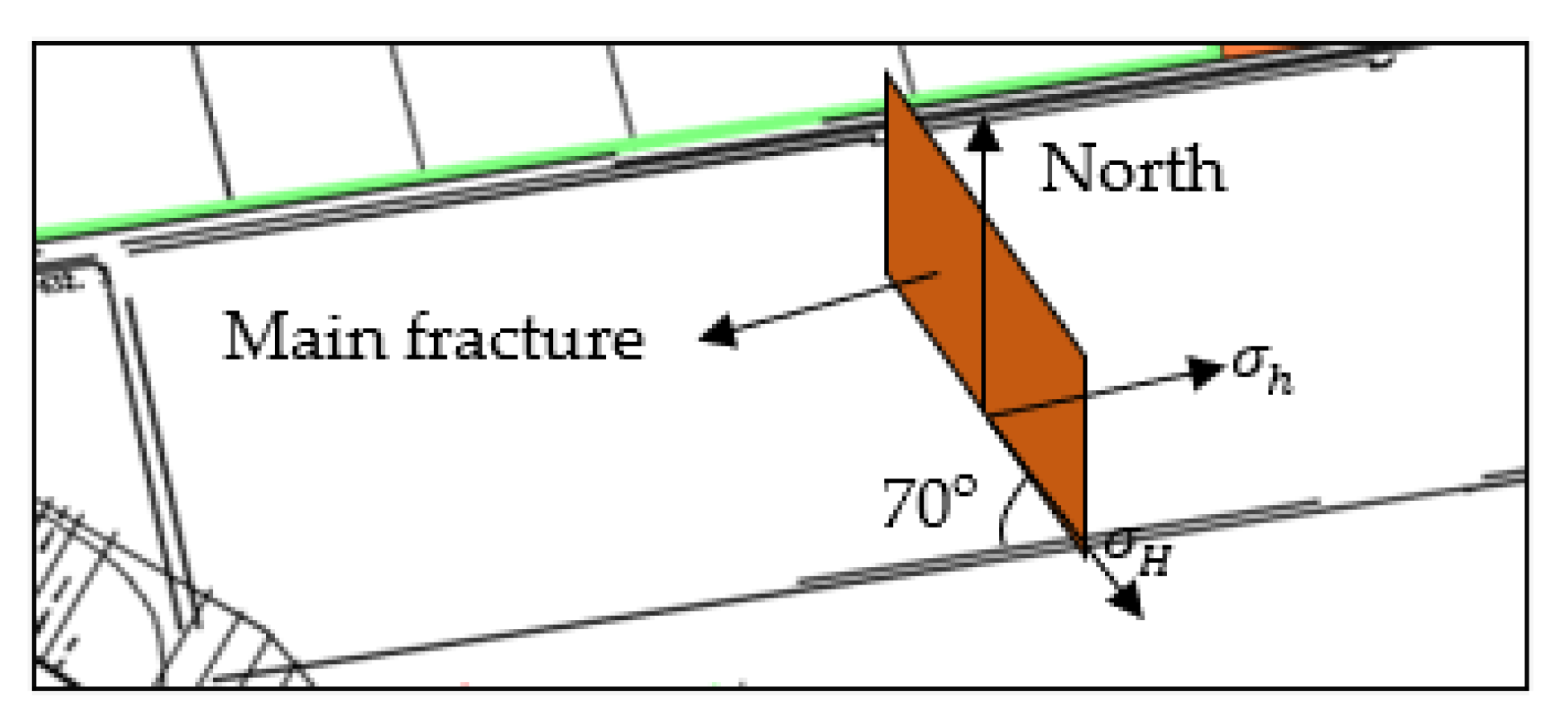
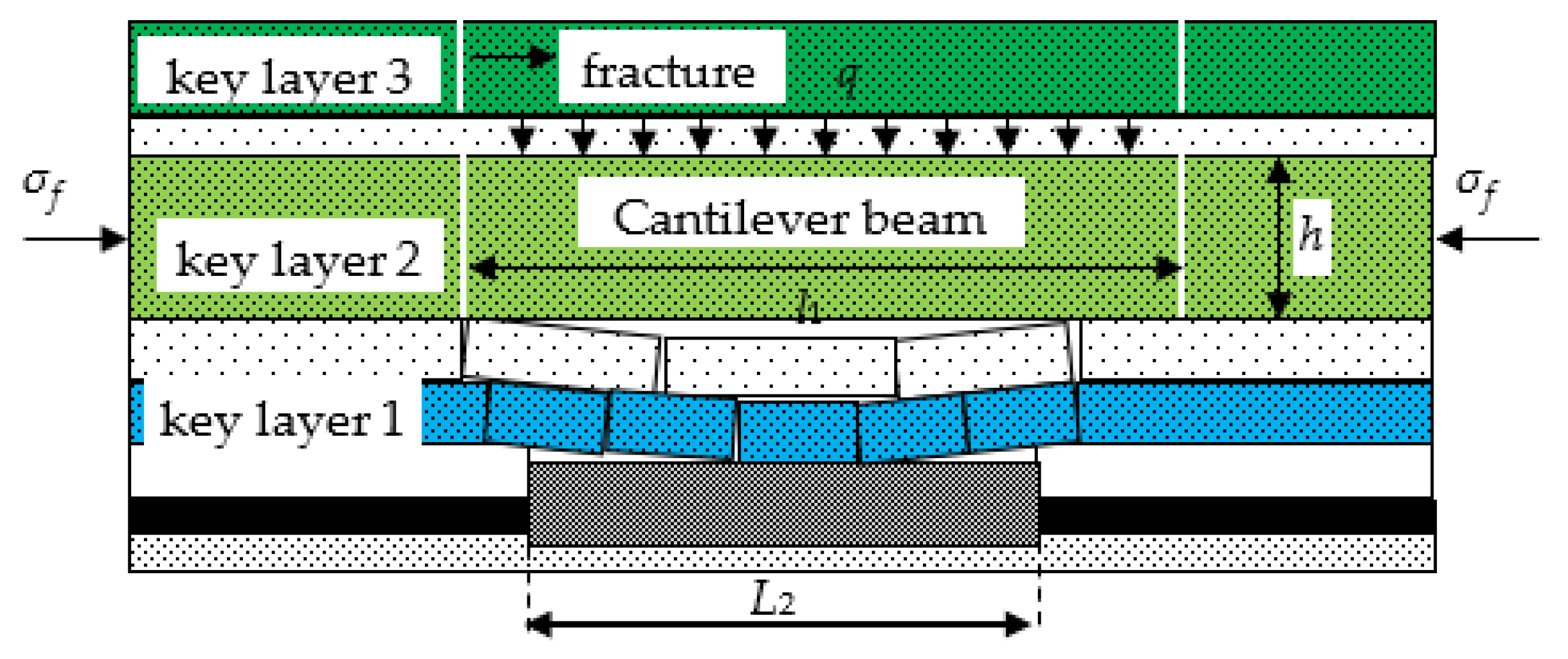

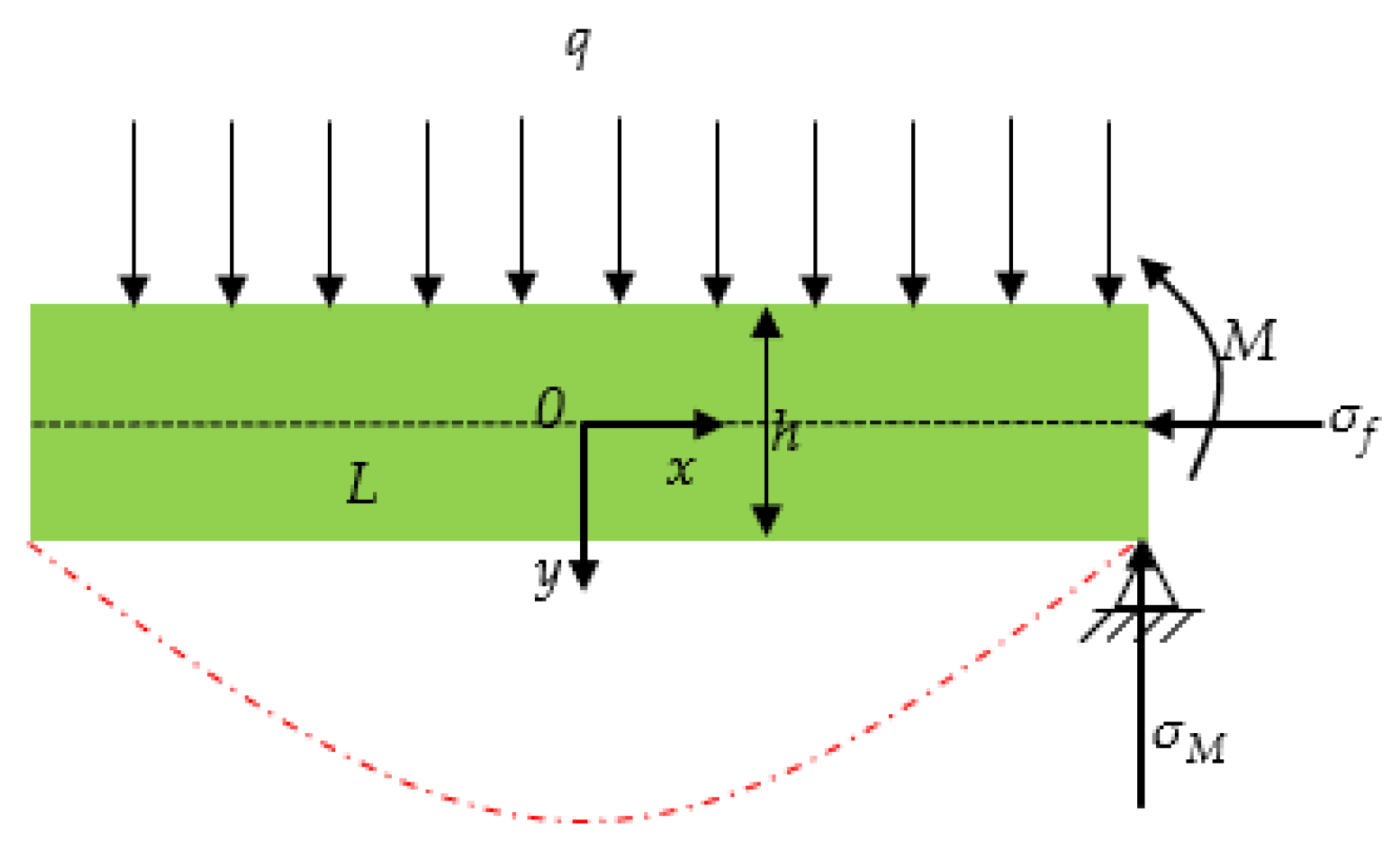




| Numbering | Rock | Thickness/m |
|---|---|---|
| 23 | Quaternary topsoil layer | 125.9 |
| 22 | sandstone group | 189.2 |
| 21 | sandy mudstone | 1.5 |
| 20 | sandstone | 8.2 |
| 19 | sandy mudstone | 1.3 |
| 18 | sandstone group | 263.4 |
| 17 | sandy mudstone | 12.6 |
| 16 | sandstone | 1.25 |
| 15 | mudstone | 0.95 |
| 14 | sandstone | 0.9 |
| 13 | mudstone | 4.4 |
| 12 | sandstone | 9.9 |
| 11 | sandy mudstone | 9 |
| 10 | mudstone | 2.05 |
| 9 | sandstone group | 29 |
| 8 | mudstone | 3.3 |
| 7 | 2 coal | 1.7 |
| 6 | mudstone | 1.6 |
| 5 | sandstone | 3.9 |
| 4 | medium-grained sandstone | 0.8 |
| 3 | fine sandstone | 2.5 |
| 2 | medium-grained sandstone | 0.5 |
| 1 | sandstone | 2.0 |
| 0 | 3 coal | 5.4 |
| Magnitude/ML | Fracturing Well Spacing/m |
|---|---|
| 1.5 | 84.94 |
| 1.6 | 104.42 |
| 1.7 | 128.12 |
| 1.8 | 156.95 |
| 1.9 | 192.03 |
| 2.0 | 234.69 |
| Magnitude/ML | Fracturing Well Spacing/m |
|---|---|
| 1.5 | 46.74 |
| 1.6 | 56.85 |
| 1.7 | 69.14 |
| 1.8 | 84.08 |
| 1.9 | 102.27 |
| 2.0 | 124.38 |
| Fracturing Well Number | Main Crack Direction/o | Fracture Length/m | Range of Slit Height/m |
|---|---|---|---|
| 1 | NE143 | 219 | −194~−530 m |
| 2 | NE145 | 240 | −213.8~−558.15 |
| 3 | NE147 | 300 | −190~−490 |
| 4 | NE150 | 270 | −200~−530 |
| 5 | NE127 | 496.5 | −382~−540 |
| 6 | NE134 | 487.5 | −304~−608 |
Disclaimer/Publisher’s Note: The statements, opinions and data contained in all publications are solely those of the individual author(s) and contributor(s) and not of MDPI and/or the editor(s). MDPI and/or the editor(s) disclaim responsibility for any injury to people or property resulting from any ideas, methods, instructions or products referred to in the content. |
© 2023 by the authors. Licensee MDPI, Basel, Switzerland. This article is an open access article distributed under the terms and conditions of the Creative Commons Attribution (CC BY) license (https://creativecommons.org/licenses/by/4.0/).
Share and Cite
Shang, X.; Zhu, S.; Jiang, F.; Liu, J.; Zhang, X.; Sun, X.; Wang, C.; Chen, Y.; Xu, B.; Li, J.; et al. Study on Mine Earthquakes Mechanism and Ground Vertical Well Hydraulic Fracturing Shock Absorption in Thick Hard Rock Mine. Sustainability 2023, 15, 5122. https://doi.org/10.3390/su15065122
Shang X, Zhu S, Jiang F, Liu J, Zhang X, Sun X, Wang C, Chen Y, Xu B, Li J, et al. Study on Mine Earthquakes Mechanism and Ground Vertical Well Hydraulic Fracturing Shock Absorption in Thick Hard Rock Mine. Sustainability. 2023; 15(6):5122. https://doi.org/10.3390/su15065122
Chicago/Turabian StyleShang, Xiaoguang, Sitao Zhu, Fuxing Jiang, Jinhai Liu, Xiufeng Zhang, Xiang Sun, Chao Wang, Yang Chen, Bo Xu, Jiajie Li, and et al. 2023. "Study on Mine Earthquakes Mechanism and Ground Vertical Well Hydraulic Fracturing Shock Absorption in Thick Hard Rock Mine" Sustainability 15, no. 6: 5122. https://doi.org/10.3390/su15065122






